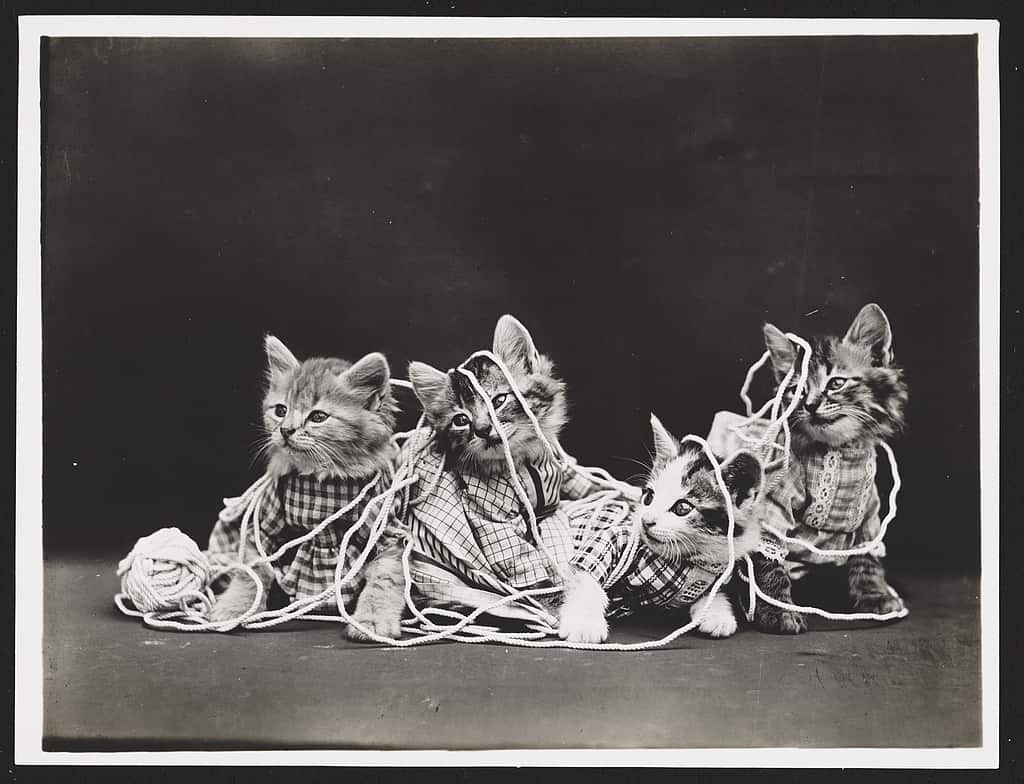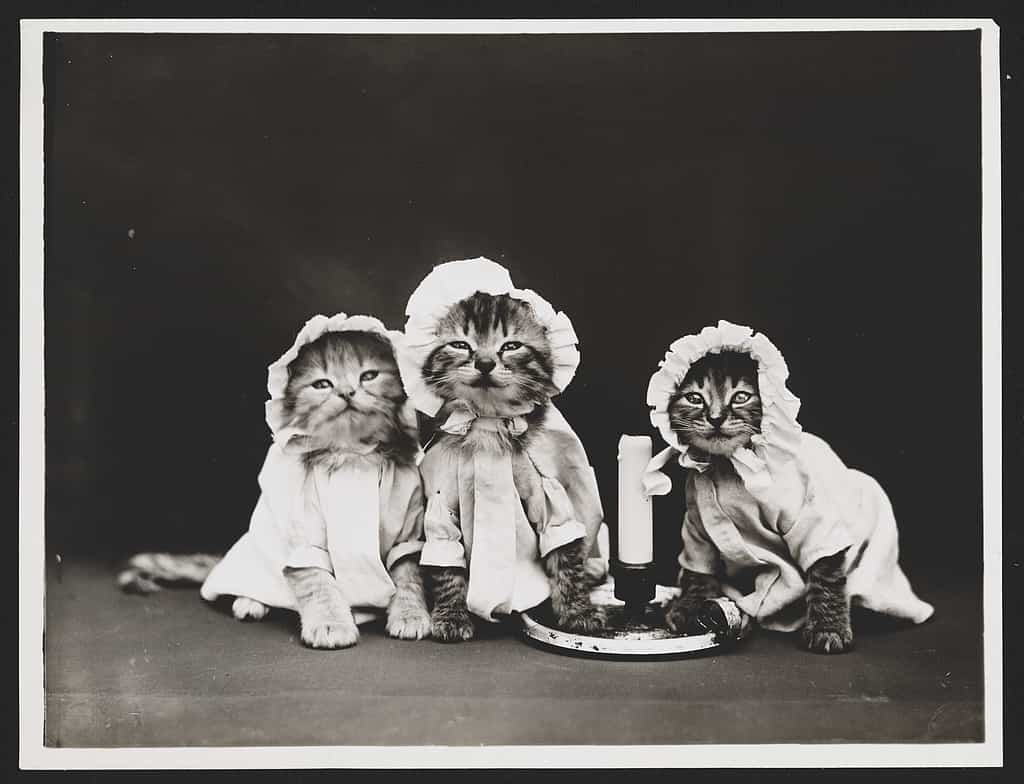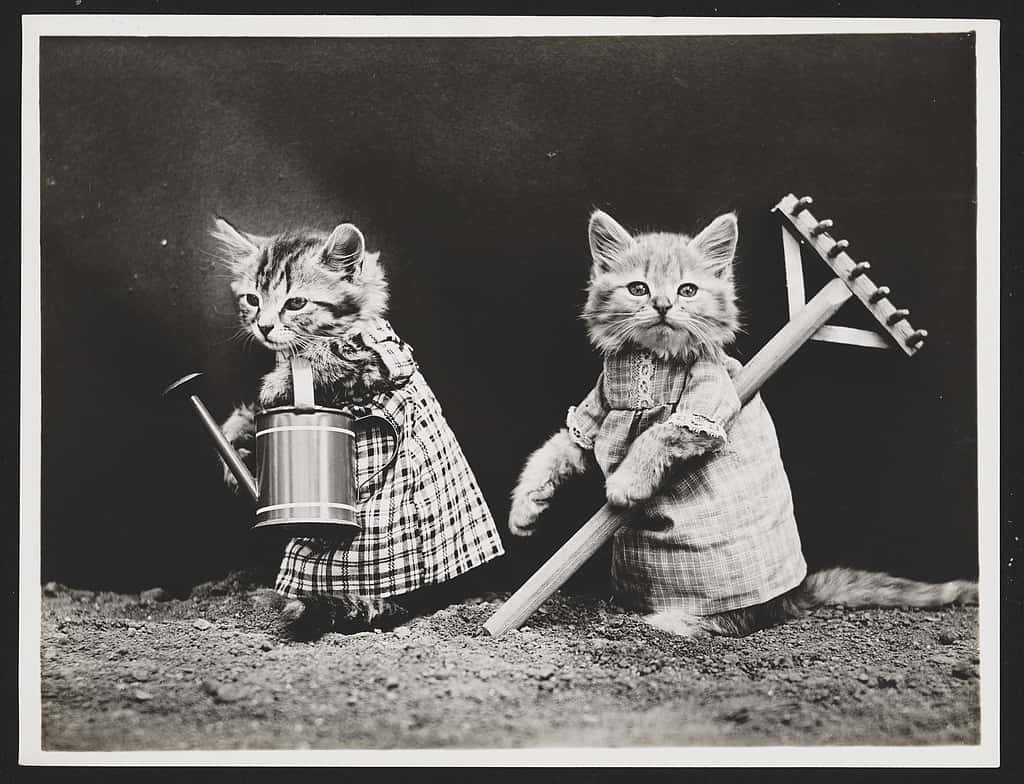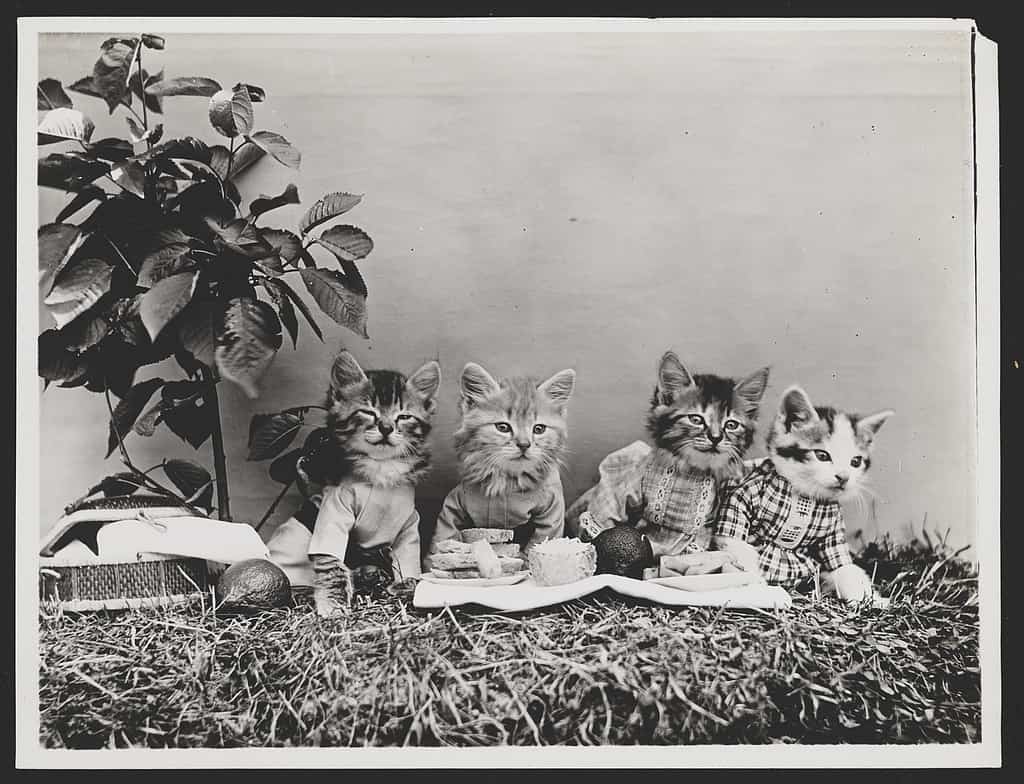People have always been fascinated by cats. Ever since the domestication of cats thousands of years ago, felines have been shown in artwork. Cats can be seen gracing Ancient Egyptian works of art, peering out from the marginalia of Medieval European manuscripts, and most recently, dominating memes and social media posts online.
Despite the challenge of getting them to sit still enough for daguerreotype photography, there are some surviving photos taken sometime between 1840 and 1860 of cats.
In early 20th century photography, cats can be seen whimsically dressed and portrayed in human-like situations. The invention of photography in the early 19th century was soon adopted as yet another medium by which to show off cats.
Pioneer of cat photography
Harry Whittier Frees (1879-1953) was one of the pioneers of photographing cats. He was inspired to capture pictures of cats in various humorous settings after a friend brought paper party hats to a dinner in 1906. The paper hat was placed onto the family cat and Frees decided to take a picture of it.

After a local postcard printer found success selling this and other cat pictures from Frees, the photographer was inspired to create even more elaborate photographs of cats and kittens.

In a 1937 Life Magazine piece, Harry Whittier Frees attributed his success as a cat and dog photographer to his gentle treatment of his photography models, using a 1/5th of a second shutter speed, and taking many many negatives to get the few select successful poses.

Harry Whittier Frees’ housekeeper, Annie Edelman was also his photographer assistant. She would sew all the costumes and help in in his studio.

To get the attention of the cats and dogs in his many pictures, Frees would often rapidly wave an object in front of them and use a high shutter speeds.

The most popular photography subject by Harry Whittier Frees was the subject. Frees would often rent animals from neighbors, local pets shops, and breeders. Frees favored using kittens because he felt they were the easiest to work with. Frees would only use kittens and puppies that were under three months old.

Early 20th century cat photography advice and profiles
The September 1900 issue of Pearson’s Magazine (v.4 no.3 pages 272 – 278) featured an interview with English animal photographer E. Landor called “A Cat and Dog life (How an Animal Photographer Obtains his Pictures of Valuable Pets).”
The article noted, “Cats are notoriously the most difficult of all living creatures to photograph satisfactorily, but Mr. Landor, an Englishman, after devoting many years to the study of the subject, has brought the art to a degree of perfection which we venture to think no one has previously attained.”
Cat photography was also a hobby enjoyed in the early 20th century. “The Book of the Cat”, published in 1903 and edited by France Simpson contains a chapter by Lucy Clarke entitled “Cat Photography for Amateurs”
In the chapter, Clarke advises aspiring feline photographers that there are “Three things are absolutely necessary to successful photography of cats for either commercial or artistic purpose – time, patience, and an unlimited number of good quick plates. Of all animals the cat is possibly the most unsatisfactory sitter should we attempt by force to secure the pose we desire. By coaxing we can generally get what we wish.”
Read next: This Man Wanted Oats, Instead He Got Cats






